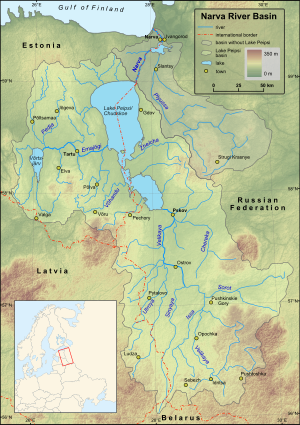Why was Novgorod, not Pinsk the most important waypoint on the Road from Varangians to Greeks?
Consider it as follows:
Crossing a water divide involves a portage over some distance where the headwaters on both sides are small streams. Also optionally portages of rapids on lower courses of major rivers.
Dnieper has a rapid stretch on lower course. Upwards of Dnepropetrovsk, Dnieper is unobstructed to upstream of Smolensk.
There are five major water paths from Dnieper to Baltic. East to west, they are:
Why did Novgorod (on route 1, near exit of Volkhov from Ilmen) become so prevalent over Pinsk (on route 5, on confluence of Pina and Pripyat)?
Consider it as follows:
Crossing a water divide involves a portage over some distance where the headwaters on both sides are small streams. Also optionally portages of rapids on lower courses of major rivers.
Dnieper has a rapid stretch on lower course. Upwards of Dnepropetrovsk, Dnieper is unobstructed to upstream of Smolensk.
There are five major water paths from Dnieper to Baltic. East to west, they are:
- Portage to headwaters of Lovat. Down Lovat to lake Ilmen, then down river Volkhov with a short portage of Volkhov rapids to lake Ladoga, then river Neva to Baltic
- Portage to headwaters of Velikaya. Down Velikaya to lake Peipsi, then down river Narva with short portage of Narva rapids and waterfall to Baltic
- Portage to headwaters of Western Dvina. Down Western Dvina with a long stretch of rapids from Jersika to Riga to Baltic
- Up tributaries Pripyat and Yaselda. Portage to Schchara. Down Shchara and Nemunas to Baltic.
- Up tributaries Pripyat and Pina. Portage to headwaters of Mukhavets. Down Mukhavets, Western Bug and Vistula to Baltic.
Why did Novgorod (on route 1, near exit of Volkhov from Ilmen) become so prevalent over Pinsk (on route 5, on confluence of Pina and Pripyat)?
Last edited:
